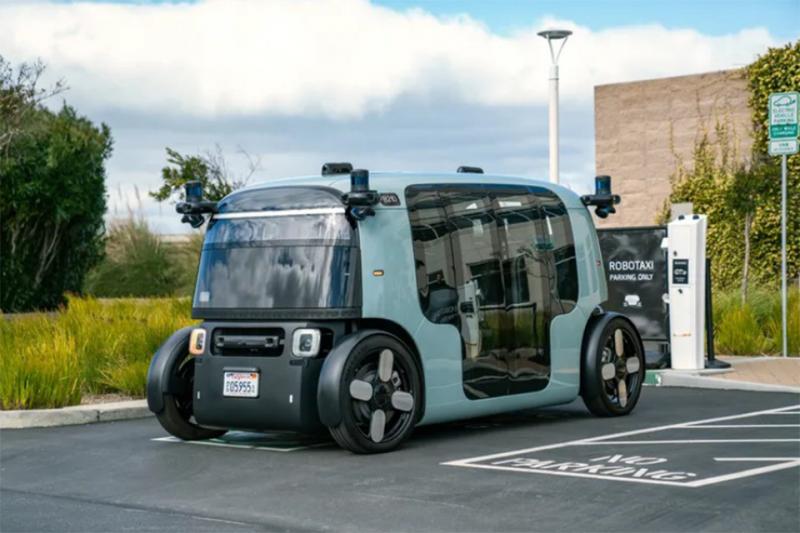The transportation industry is on the verge of a major revolution thanks to the emergence of robotaxis. Robotaxis, which are self-driving taxis without a human driver behind the wheel, have the potential to drastically change how we get around our cities. With major tech companies pouring billions into robotaxi development, it seems this new mode of transportation is just around the corner.
What is a Robotaxi?
A robotaxi, sometimes called a driverless taxi or autonomous taxi, is essentially an automated vehicle designed to provide on-demand, point-to-point transportation for paying customers on public roads. The key features that define a robotaxi are:
- No human driver inside the vehicle - Robotaxis are fully autonomous vehicles capable of navigating roads and transporting passengers without a human operator behind the wheel. Advanced sensors, cameras, and artificial intelligence allow the vehicle to drive itself.
- On-demand service - Customers can hail and pay for rides using a smartphone app, similar to ride-hailing services like Uber and Lyft. Robotaxis autonomously pick up and drop off multiple passengers throughout the day.
- Internet connectivity - Robotaxis are connected to the internet, allowing them to communicate with a central fleet management system. This connection enables remote monitoring and coordination of rides between passengers and vehicles.
- Level 4 or 5 autonomy - For a vehicle to truly function as a driverless taxi service, it needs Level 4 or 5 autonomy as defined by SAE International. This means the robotaxi can drive itself in nearly all conditions without human intervention.
Major Developments in Robotaxi Technology
Over the past decade, technological advances have brought robotaxis closer to reality. Major companies like Waymo, Cruise, Uber, and Tesla have been intensely focused on developing self-driving systems capable of commercial deployment. Some major milestones along the path to real-world robotaxis include:
- Early testing on closed courses - In the early 2010s, companies began mapping environments and refining sensors/software through testing in controlled, closed-course settings. This allowed collecting large amounts of training data.
- Public road testing begins - Around 2015, some companies started sending autonomous prototypes onto public roads, usually with human safety drivers present. This helped uncover challenges of the real world.
- First driverless rides - In 2020, Waymo began offering a fully driverless taxi service to a small number of customers in Phoenix, Arizona, though with restrictions on routes and times. This was a major proof of concept.
- Expansion of testing sites - To collect more diverse data, companies have rapidly expanded testing to dozens of cities worldwide in recent years. This will help accelerate progress towards deploying robotaxis nationally.
The Robotaxi Revolution is Coming
All signs point to robotaxis becoming an everyday reality within the next 5-10 years. As the technology matures and regulations catch up, here's a look at how experts think robotaxis may transform transportation:
- Wide availability - Robotaxis could potentially eliminate the need for private car ownership for many, as on-demand, self-driving fleets will be far more accessible than personally owned vehicles.
- Cheaper transportation - Cost projections indicate robotaxis may cost just $0.50-$0.80 per mile compared to $2-$3 for traditional rideshares today. This would make shared mobility much more affordable.
- Reduced congestion - When vehicles can drive closer together at higher speeds, studies estimate traffic throughput could increase by up to 90%. Roads could handle significantly higher car volumes.
- Improved road safety - An Oxford University study found robotaxis could prevent over 30,000 deaths annually in the U.S. alone by removing human error from driving.
- Economic impacts - Introducing robotaxis on a mass scale is projected to create millions of jobs and add over a trillion dollars to the U.S. economy within the next 10-15 years.
- New mobility services - Robotaxis could enable novel services like package delivery, mobile marketplaces, and transportation services for disabled/elderly people who can't drive today.
Robotaxis promise benefits like zero-emission transportation access for all, less congestion, and improved safety if deployed safely and effectively. While robotaxi technology still has progress to make, it may very well shape our cities and transform economies within just a few short years from now. The robotaxi revolution is nigh upon us.
Get more insights on this topic: Robotaxi
